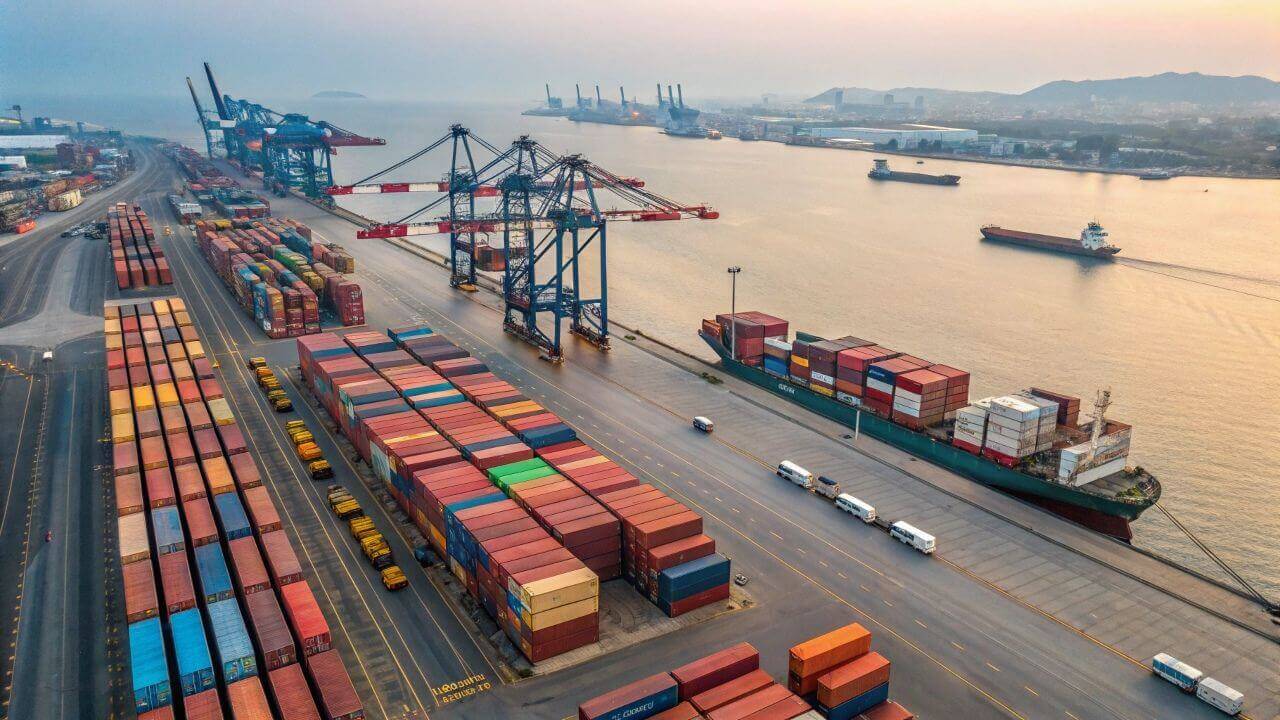Port strike update headlines have dominated supply chain news, but this one is different. The International Longshoremen’s Association (ILA) has just secured a historic deal with the United States Maritime Alliance (USMX) that delivers record wage increases ILA workers have long fought for. This breakthrough avoided a crippling shutdown of the East and Gulf Coast ports, protecting billions of dollars in trade and calming fears of massive disruptions.
For businesses and shippers, the story doesn’t end here. Every USMX-ILA master contract sets the tone for future labor talks, automation battles, and global trade flows. The question now isn’t what happened, but how this deal reshapes logistics tomorrow.
Why the East Coast Port Strike Update Matters
Every East Coast port strike update matters because the East and Gulf Coast ports handle more than half of U.S. imports. When labor talks stall, the threat of port shutdown impact on logistics shakes retail, energy, and food industries. Companies prepare for cargo congestion at U.S. ports, which creates delays that trickle through the U.S. warehousing and trucking network.
Shippers closely watch these developments. A single disruption leads to shipping surcharges (WDS/WID), reduced vessel calls and port capacity, and a rush toward air freight alternatives to port strike delays. That’s why each new ILA contract ratification vote 2025 is more than a union issue; it’s a business survival signal.
Latest East Coast Port Strike Update: Tentative and Final Agreements
The tentative agreement between ILA and USMX was announced in February 2025 after weeks of stalled talks. A breakthrough came when both sides agreed to automation protections in port contracts and a record contract wage increase for dockworkers. Industry reports show this as the largest pay raise in maritime history.
The final ILA contract ratification vote 2025 confirmed the deal, ending fears about how long the East Coast strike will last. Analysts note that without this agreement, the impact of port strikes on U.S. businesses could have reached billions in losses.
| Agreement Details | Outcome |
| Wage Hike | wage increases in new ILA contract (largest on record) |
| Automation | automation protections in port contracts secured |
| Contract Length | 6 years under U.S. maritime labor agreement |
| Ratification | Approved by ILA members nationwide |
ILA Port Strike: What Led to the Negotiations?
The conflict began with a port automation dispute. Employers wanted more automated cranes, but dockworkers argued this would cut jobs. The ILA insisted on stronger automation protections in port contracts before signing any deal. This fight echoed past dockworkers’ contract negotiations across the world.
Another key factor was compensation. Rising inflation and increased workload pushed demands for record wage increases for ILA members. The deal now guarantees higher pay, overtime protections, and bonuses, making it one of the most significant wins in labor history.
The Port Strike Update Key Announcements from USMX & ILA
The USMX and ILA new master contract announcement highlighted cooperation after years of disputes. Union leaders praised the record contract wage increase for dockworkers, while USMX stressed that trade flow continuity had been preserved.
Political figures also weighed in. A Trump meeting with ILA leaders in early 2025 created headlines, with the former president voicing support for unionized dockworkers. This unusual political spotlight showed how central these negotiations are to national trade stability.
When Would a Possible Gulf and East Coast Attack Begin?
Before the deal, many feared an October 2025 walkout. Speculation about how long the East Coast strike last caused panic across industries, leading to contingency planning. Shippers rerouted goods and some delayed orders entirely.
Although the crisis has passed, experts warn future disputes could arise once again. Every expiring contract means the threat of another ila port strike 2025-style standoff returning to the headlines.

What Is the Impact on Global Logistics and Trade?
The impact of port strikes on U.S. businesses is huge. A closure at East Coast terminals would ripple into Asia, Europe, and Latin America. Analysts at Supply Chain Dive estimate that even a two-week closure could cost billions.
Global supply chain repercussions extend to cargo delays at Savannah port, a major gateway. Backlogs create domino effects, slowing containers worldwide. Both Maersk advisory East Coast strike and Hapag-Lloyd work disruption surcharge notices warned shippers of higher fees if stoppages continued.
Shippers’ Options if Strike Action Prevails
When port labor conflicts escalate, businesses must pivot fast. Supply chain alternatives during port strike include redirecting shipments to West Coast port rerouting due to strike, using Canadian ports as alternative entry points, or paying for air freight options during U.S. port strike.
Other strategies include shifting cargo into Mexico and transferring through inland hubs. These tactics reduce container backlog East Coast ports, but raise costs and add complexity to the U.S. warehousing and trucking network.
Force Majeure, Terminal Positions, and Shipping Line Obligations
During strikes, carriers often cite force majeure port strike shipping, releasing themselves from liability. Shippers must check contracts carefully. Many U.S. maritime labor agreements allow terminals to suspend service until disputes resolve.
This creates confusion and increased expenses. After that, shipping fees (WDS/WID) spike, and storage expenses quickly increase. Freight brokers stress that planning ahead is the only safeguard against financial losses.
Lessons from Historic ILA Strikes on U.S. Ports
Past strikes underline today’s challenges. In the 1970s, a major ILA stoppage paralyzed cargo for weeks. In 2012, contract talks nearly collapsed again. Each event underscored how vulnerable the U.S. supply chain disruptions are to labor unrest.
These historic cases prove that every port strike update carries weight. By studying past disruptions, companies learn how port strikes affect global shipping, and why preparation is key.
How to Stay Prepared for Ongoing or Future Strike Actions
Experts recommend ten practical steps. Always communicate with freight brokers, book space early, and budget for higher costs. In severe cases, diversify sourcing away from coastal gateways.
Industry consultants argue that resilience is more than reaction. It requires planning across the U.S. warehousing and trucking network, investing in visibility tech, and exploring air freight alternatives to port strike risks.
Beyond the East Coast: Japan Port Strike Update and Global Trends
Japan recently saw its first nationwide strike in six years. The Japan port strike update revealed how even highly automated terminals remain vulnerable. Terminal congestion worsened, creating chaos in Asia-Pacific trade.
By comparing U.S. and Japanese cases, analysts note the shared pressure points: automation, wages, and government mediation. These lessons illustrate why supply chain alternatives during port strikes must always remain part of strategic planning.
Conclusion: Staying Ahead of Supply Chain Disruptions
The port strike update shows more than just labor victory. It highlights how the USMX and ILA new master contract reshaped the logistics landscape and gave dockworkers’ contract negotiations a powerful precedent. Businesses must stay alert to every negotiation cycle.
For companies navigating these risks, staying informed is survival. Reliable updates, expert advice, and proactive strategies help avoid the impact of port strike on U.S. businesses. For readers seeking ongoing insights, visit gotechanic.com for industry-focused resources that can support planning ahead.
FAQs:
Is the port strike resolved?
Yes, the strike threat was resolved after the ILA and USMX reached a new six-year master contract with record wage hikes.
What will be affected by the port strike?
A strike would affect cargo flow, U.S. supply chain disruptions, retail imports, manufacturing parts, and global trade routes.
What is the status of the ILA strike?
In early 2025, members adopted the new contract, ending the ILA strike.
Are port workers going on strike 2025?
No, the 2025 strike was avoided with the ILA contract ratification vote 2025 that secured better wages and protections.
What is the new contract for longshoremen?
The USMX and ILA new master contract includes a six-year term, record contract wage increase for dockworkers, and safeguards against automation job losses.


